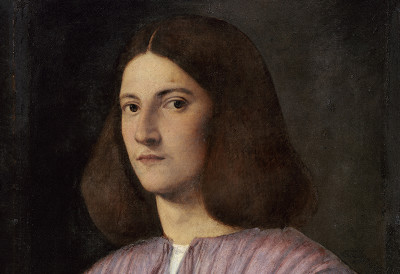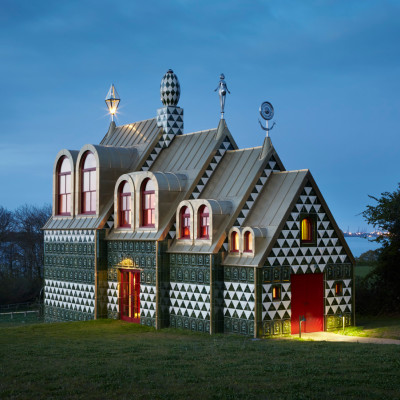10 minutes with… Ann Christopher RA
10 minutes with… Ann Christopher RA
By Harriet Baker
Published 15 July 2015
Each month we catch up with a different Royal Academician. This month, Ann Christopher RA tells us about casting plaster figures, her love of Richard Serra’s work and her new sculpture in Uganda.
-
“My work is very much a visual diary of my physical and emotional life,” says Ann Christopher RA. She creates non-figurative sculptures, cast primarily in bronze, stainless steel, silver and fabricated corten (a kind of weathering steel).
Working from her studio near Bath, and in more intense phases on residencies abroad, Christopher creates sculptures in sequence, one work thematically leading on to the next. “I slowly become aware of changing visual obsessions: shadows, shapes, colours or lines,” she explains. “Nature is everywhere. As an abstract artist I see only the part of nature that I’m currently obsessed with. It’s like having a filter in your brain.”
Having studied at Harrow School of Art, Christopher then went on to the West of England College of Art, graduating in 1969, the year of her first solo exhibition. She exhibited throughout the 1970s and in 1989 she was given a retrospective of work at the Dorset County Museum and Art Gallery. Christopher was elected a member of the Royal Academy in 1980, becoming a Royal Academician in 1989 and elected a Fellow of the Royal Society of British Sculptors in 1992.
We chatted to the artist about what she’s working on at the moment and what the RA means to her.
-

Ann Christopher RA, The Lines of Time – 3.

Ann Christopher RA, The Lines of Time – 8.
-
What are you working on at the moment?
I’m currently working on some drawings for a sculpture which I will be making in Uganda for the Rwenzori Sculpture Foundation. I have been involved in the project from the outset – it is now an up and running foundry near Kasese, a small town in the west of the country. The aim of the foundry is to provide employment to local Ugandans. There is a clinic which has been set up for local villagers and, as part of the project, indigenous trees have been planted which will encourage wildlife to return to the area. My sculpture will be part of a new sculpture park which, along with a gallery, will provide a reason for tourists to visit and bring additional income to the area.
Alongside this project, I am continuing to develop a series of drawings called The Lines of Time (pictured) for an exhibition in the RA’s Tennant Gallery in 2016. I began the series in France – it is based on the effects of the ever-changing climate and light on the landscape.
I often visit France and work there for up to four weeks at a time. I stay in a house in the south west, near Albi. It’s especially tranquil and conducive to working. I find being in a new environment extremely stimulating and the opportunities to work away from home especially productive, with no phone calls or emails to distract me. I tend to go on artist residencies alone and work very intensely. Sometimes I draw, sometimes I make sculptures, so I have a travelling studio kit. It is always interesting to see what effect a new environment has on me – it is a journey in every sense of the word.
What is your earliest memory of art?
As a child, I remember casting plaster figures and animals from cheap rubber moulds. Was it art? No – but it was the start of my drive to make things. I bought my first book on art history for three guineas, and then I saw an actual painting of Van Gogh’s Sunflowers in the National Gallery and wondered why it was so dull. I didn’t realise at the time that he painted many versions of the same work. But my most significant memory was my overwhelming emotional response to Rothko’s nine ‘Seagram Murals’ exhibited in 1970 at the Tate Gallery (now Tate Britain) – that has never left me.
What work of art do you wish you’d created?
I wish I’d made one of Richard Serra’s huge corten sculptures. His last exhibition at the Gagosian Gallery was unbelievably powerful and yet it had a tranquillity that I just became transfixed by. Serra’s work was not new to me but standing in, under, and around those monumental pieces of steel was magical. I was lucky enough to have been in the gallery virtually alone. I loved their terrifying weight and the visually delicate and refined balance and simplicity – an enviable combination as a sculptor.
-

Ann Christopher RA
Photo: Eamonn McCabe
-
How do you know when a piece of work is finished?
I know it’s finished when it stops troubling me and waking me at night. Sometimes I have to leave it until whatever is ‘wrong’ tells me what to do. Sometimes it has to be ignored until a later date or destroyed. Sometimes it just works.
Where were you when you found out that you had been elected as an Academician?
It was the afternoon tea break on a hot May day and I was outside in the courtyard of my partner’s foundry when the phone rang. I cannot recall if I answered the phone, but it was Ralph Brown saying I had been elected and I was thrilled. I had been exhibiting work in the Summer Exhibition for 10 years and was one of very few abstract sculptors exhibiting there at that time.
What does the Royal Academy mean to you?
It is an extraordinary historic institution made up of an ever-changing diverse collection of artists. As someone who works in a solitary environment it is a welcome chance to talk with like-minded colleagues. I also enjoy the thrill of meeting and getting to know some of the artists and architects that I had held in awe as a student.
If you were president of the RA for the day what you would you change?
I would banish forever the black ball ballot box – I was never convinced that the voting balls went in the correct side. But if I were to be president – even for a day – I would find someone who looks just like me so that I could stay working in my studio. The role of president is one of endless diplomatic meetings – not my speciality.
Finally, what would be your advice to aspiring artists?
I am often asked this and my first response is “don’t do it”. What I really mean is that you have to be very driven and very determined, be in contact with a thriving artistic community or a major art centre, exhibit where and when you can and keep going.
-
Video
Ann Christopher RA: To Know Without Remembering
Ann Christopher RA discusses her 2013 exhibition at Pangolin London.






